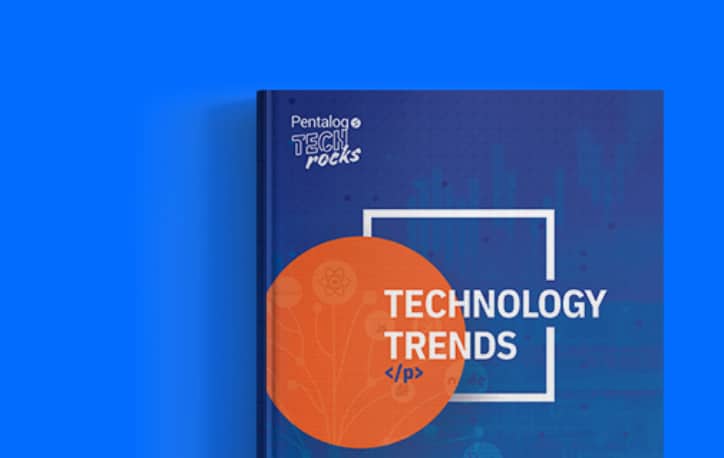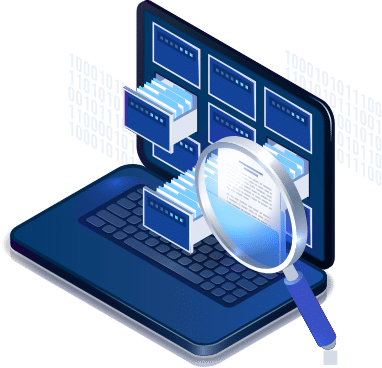The cloud is limitless but without clean data, your growth isn’t.
Cloud storage provides unmatched flexibility and scale, but it also brings new challenges. One of them is maintaining data quality and usability across an ever-expanding array of platforms.
As companies adopt multi-cloud and hybrid environments and data sprawls across multiple platforms, issues like inconsistencies, duplicates, and silos can silently erode the quality of your data and ultimately the efficiency of your operations – turning your biggest asset into a liability.
What many businesses fail to understand is that the real advantage of cloud storage isn’t just in storing more data – it’s in ensuring that data remains reliable, consistent, and actionable across platforms. To fully harness the power of the cloud, businesses must prioritize data quality to make sure that every piece of information, no matter where it resides, contributes to accurate insights and informed decisions.
The Growth of Cloud Storage and Multi-Platform Environments
The cloud has evolved dramatically in recent years, and with it, the way businesses approach data management. As companies increasingly rely on these cloud environments to run their businesses, it’s crucial to understand how cloud storage works now – and why this evolution matters for every organization, regardless of whether they’re expanding their cloud footprint or not.
From Storage Space to Ecosystem: The Evolution of Cloud
Cloud was once a simple solution for data storage and back up. But today, it’s a core component of an integrated ecosystem that powers key business functions. Modern cloud environments enable collaboration, analytics, real-time data sharing, and AI-driven decision-making within and across organizations. This evolution means businesses must shift their focus from merely storing data on cloud to actively managing its quality.
The Rise of Multi-Cloud and Hybrid Environments
With cloud computing and storage infrastructure now deeply embedded into business operations, organizations are tapping into the cloud’s full potential to enhance decision-making, innovation, and customer experiences. The rise of multi-cloud and hybrid cloud environments is a byproduct of it.
Multi-Cloud:
A multi-cloud approach is one where businesses use cloud storage services from different providers to meet specific business needs.
Hybrid Cloud:
Hybrid cloud blends both private and public cloud environments, allowing businesses to manage sensitive data on private clouds while utilizing public clouds for less critical operations.
Companies are no longer tethered to a single cloud storage provider. Instead, they’re diversifying their data strategies by utilizing multiple cloud storage options to avoid vendor lock-in, increase resilience, and ensure greater flexibility. However, as companies adopt these more complex cloud architectures, managing data across multiple locations becomes increasingly challenging. The integration of data between various platforms and environments—public, private, hybrid, and on-premise—can lead to issues such as inconsistent data formats, synchronization problems, and lack of visibility. Without a strong strategy, your data can become siloed and redundant, which further complicate data governance, increase storage costs, and make it harder to maintain high-quality, usable data.
Why This Matters Now
Even businesses that aren’t actively expanding their cloud footprint or aren’t fully invested in multi-cloud or hybrid cloud storage must understand the growing complexity of these ecosystems. The rapid growth of cloud storage and the increased integration of platforms can lead to new challenges for businesses, even if they’re just maintaining their existing cloud infrastructure. Data quality issues, inconsistencies, and silos don’t just arise when you’re actively scaling your cloud infrastructure—they can manifest as your cloud environment becomes more interconnected and complex.
For organizations that are still navigating the complexities of cloud integration, proactive data management is crucial. Ensuring consistent, clean, and usable data across platforms, whether they are public clouds, private clouds, on-premise storage systems, or data centers, can prevent costly problems down the road. Poor data quality, such as duplicates, mismatched records, or fragmented datasets, can lead to poor decision-making, inefficiencies, and lost opportunities.
As cloud environments continue to expand and evolve, the costs associated with these data issues only increase. Therefore, it’s only wise to address these challenges at the early stages. This will not only prevent costly issues down the road but will also ensure that your cloud investments yield meaningful business value.
Taking a proactive approach to data management now allows businesses to anticipate potential issues and avoid the negative impacts of poor data quality, positioning them for long-term success in an increasingly complex digital ecosystem.
The Data Quality Challenge Across Platforms
Maintaining data quality on cloud and multi-platform environments has become one of the most pressing challenges for businesses. While cloud platforms offer scalability, flexibility, and immediate access to cutting-edge tools, they also introduce a host of complexities that can compromise data quality. Here’s how:
1. Data Silos and Fragmentation
In a 2024 State of the Cloud Report by Flexera, 57% of organizations reported experiencing silos with multi-cloud architectures. When data is spread across multiple devices or platforms, it can become isolated – difficult to access and consolidate. This fragmentation prevents a unified view of critical business information and creates decision-making blind spots, which lead to inefficiencies, duplication, and missed opportunities.
For example, a company may store customer data in separate clouds for marketing, sales, and customer service. Each department may use its own tools to manage and analyze this data, which results in inconsistent insights, poor decision-making, and, resultantly, a disjointed customer experience.
2. Inconsistent Data and Poor Usability
With so many systems and sources involved, data becomes prone to errors, mismatches, and discrepancies. For instance, an address listed in one database may not match the same address in another, or customer names may be spelled differently across systems. These inconsistencies not only undermine the trustworthiness of the data, but also leads to poor usability.
If employees must cross-check and correct data before making decisions, it slows down operations, increases costs, and elevates the risk of human error – all of which ultimately limits business agility.
3. Managing Unstructured Data
One of the biggest hurdles in cloud data management is handling unstructured data—information that doesn’t fit neatly into traditional databases. This includes emails, documents, videos, images, and social media content. Managing and analyzing this data requires specialized tools and strategies, as traditional data governance methods often fall short in dealing with these complex data types.
Why Data Quality Across Platforms Matters?
Because poor data quality leads to:
- Operational Inefficiencies: Wasted time resolving data discrepancies.
- Misguided Strategies: Decisions based on incomplete or incorrect information.
- Revenue Loss: Missed opportunities due to unreliable data insights.
High-quality data is essential for businesses to remain competitive and drive success. Organizations with fragmented, duplicated, or inconsistent data face a higher risk of making decisions based on incomplete or erroneous information, which can result in misguided strategies and operational setbacks.
Best Practices for Ensuring Data Quality and Usability Across Platforms
As data ecosystems grow more complex, businesses need to adopt proactive data quality management strategies to ensure their data is accurate, reliable, and accessible across the entire organization, whether it’s in the cloud, on-premise, or across hybrid environments. Here are some of the best practices to follow:
1. Integrating Data Across Platforms
Ensuring smooth data transfer between cloud platforms, on-premise systems, and SaaS tools is critical for maintaining data quality – and a single source of truth. Businesses should invest in integration tools that:
- Enable real-time data synchronization to prevent inconsistencies.
- Facilitate interoperability between diverse environments.
- Reduce the risk of fragmentation.
Tools and Technologies for Data Integration
APIs, middleware solutions, data virtualization tools, and storage area network technologies help businesses create seamless connections between their cloud platforms and on-premise infrastructure. These advanced tools and technologies ensure that data remains consistent, accessible, and up-to-date across all environments.
2. Use Object Storage
Object storage is a cloud-based architecture designed to store massive amounts of unstructured data efficiently. It provides scalability, metadata tagging, and durability, making it an ideal choice for organizations managing large datasets in cloud environments.
3. Prioritize Data Cleansing and Matching
Data cleansing and matching play a critical role in maintaining high-quality data across platforms. Regular data cleansing helps remove duplicates, correct errors, and standardize formats, ensuring that the data remains accurate and usable.
The Role of Matching Algorithms
Advanced matching algorithms, like those in DataMatch Enterprise (DME), reconcile discrepancies between datasets by identifying and linking related records. These algorithms use techniques such as fuzzy matching, phonetic matching, and domain-specific logic to detect and merge duplicate records, in order to ensure that businesses have a unified, accurate view of their data.
4. Establish Strong Data Governance and Quality Frameworks
Data governance frameworks define the policies, procedures, and standards for managing data across the organization.
Protocols for Data Stewardship, Auditing, and Monitoring
Establishing clear protocols for data stewardship ensures accountability for data quality across departments, while regular auditing and monitoring help detect and address data quality issues early. Tools like DataMatch Enterprise can streamline this process by providing continuous oversight and ensuring that data remains consistent and reliable across platforms.
5. Automate Data Quality Management
Manual data management is inefficient and prone to errors. Automated solutions streamline data quality processes by:
- Continuously monitoring for inconsistencies.
- Standardizing data across platforms.
- Providing real-time validation and cleansing.
Automation, with tools like DataMatch Enterprise, can simplify critical tasks such as data matching, deduplication, and quality assurance, allowing businesses to handle large volumes of data with ease. These tools utilize sophisticated algorithms that can detect inconsistencies, reconcile disparate data, and maintain a unified view across platforms.
By automating data cleansing and matching, businesses benefit from:
- Time Savings: Automation significantly reduces the time required for manual data checks and corrections.
- Reduced Errors: Algorithms minimize the risk of human error, ensuring more accurate and consistent data.
- Improved Data Usability: Clean, deduplicated data enhances usability, supporting better analytics and decision-making.
Example:
Consider a marketing agency managing customer data across multiple SaaS platforms and cloud providers. Without automated tools, reconciling customer records from different systems would be time-consuming and prone to errors. By implementing DataMatch Enterprise, the agency can automatically detect duplicate records, standardize customer information, and maintain consistent data across all platforms—leading to more effective marketing campaigns and improved customer targeting.
What’s Next: The Future of Cloud Data Management
With businesses continuing to expand their reliance on cloud environments, the future of cloud data management will be shaped by emerging trends that address scalability, security, and data quality challenges, and organizations must stay ahead of these developments to maximize the value of their data.
Emerging Trends in Cloud Data Management
1. AI and Machine Learning for Data Quality
AI-driven solutions are revolutionizing data management by automating cleansing, classification, and anomaly detection. Moreover, machine learning algorithms can continuously improve data matching and deduplication processes. This can make data matching tools, like DataMatch Enterprise, even more powerful in maintaining high-quality data across platforms.
2. Data Observability and Real-Time Monitoring
Businesses are shifting from reactive to proactive data quality management. Data observability tools provide real-time insights into data integrity, which helps flag inconsistencies before they impact operations. This approach ensures continuous data reliability across cloud ecosystems.
3. Data Mesh and Decentralized Architectures
Traditional centralized data warehouses are being supplemented or replaced by data mesh architectures, which empower individual business domains to manage their own data while maintaining interoperability. This shift enhances agility and scalability in multi-cloud environments.
4. Enhanced Security and Compliance Measures
With security a top challenge for businesses, cloud providers are incorporating more advanced security, compliance monitoring, and disaster recovery features to help businesses protect sensitive data while ensuring regulatory adherence.
5. Interoperability and Multi-Cloud Optimization
Companies are increasingly adopting solutions that ensures seamless integration between multiple cloud providers. Advances in APIs, middleware, and data virtualization are enabling smoother exchanges and reducing vendor lock-in risks.
Turn Your Cloud Data into a Competitive Advantage
Your cloud data should be an asset, not a liability. Without proactive data management, errors and inefficiencies will only grow as your cloud ecosystem expands. DataMatch Enterprise empowers you to take control by ensuring your data is accurate, consistent, and usable across platforms.
Get ahead of data challenges – schedule a demo with our data expert today.














































